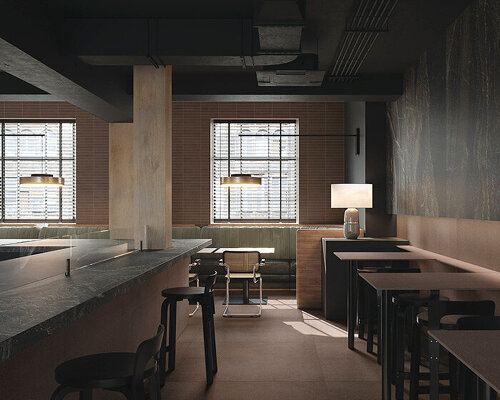FMG Creates Dialogue with Earth through TerraPura
FMG Fabbrica Marmi e Graniti introduces TerraPura, a full-body porcelain stoneware project that merges the ancient wisdom of the earth with contemporary technological precision. Launched for Cersaie 2025, TerraPura was conceived in Italy as part of FMG’s ongoing exploration of material authenticity and design performance.
Created using Full Body³ technology, TerraPura celebrates natural imperfection and timeless beauty through surfaces that are as durable as they are evocative. Whether applied in highly trafficked environments like restaurants, boutiques, or even outdoor spaces, TerraPura is designed to meet the demands of modern architecture while remaining deeply rooted in the earth’s original essence.
FMG’s Full Body³ Technology
Each TerraPura surface tells a geological story through fine veins, subtle variations, and sculptural grain. For the Italian ceramics company, these visual traces are not seen as flaws but as reflections and marks of nature’s own narrative. The result is a ceramic material that feels both ancient and new, familiar yet sophisticated, capable of stirring emotion while offering superior functional performance.
Made using FMG’s Full Body³ technology, TerraPura ensures total homogeneity between the surface and its inner body. This makes the material extremely resistant to wear, ideal for high-traffic areas such as public buildings, hospitality venues, and urban spaces.
Moreover, its consistent depth allows for creative edge treatments, adding versatility to both architectural and interior design applications.
TerraPura’s Modular Palette and Finishes
TerraPura offers a range of ten colors inspired by natural minerals and landscapes: Pura Bianco, Pura Antracite, Pura Rosa, Pura Avio, Pura Marrone, Pura Beige, Pura Grigio, Pura Greige, Pura Celeste, and Pura Argento. These tones give designers the freedom to compose harmonious environments or create bold contrasts, lending each project a distinct identity.
The palette’s subtle warmth and balance bring elegance to both minimalist and richly layered interiors.
To enhance versatility, FMG offers three primary finishes, each tailored to specific uses:
- Top Lapped: Provides tactile depth with a smooth, expressive sheen, perfect for refined interiors.
- Natural Plus: Combines adaptability and restraint, suitable for any context.
- Antislip: Ensures safety and comfort in wet or outdoor settings, ideal for spas, terraces, and wellness spaces.
Dimensions and Decorative Solutions
TerraPura’s modular dimensions range from 120×120 cm to 30×30 cm, supporting a variety of compositional approaches. Decorative options include:
- Righe Structured surface: For architectural accents.
- Italian herringbone mosaic (60×25 cm): A reinterpreted classic that enriches any space.
- Strip tile mosaic (30×30 cm): Perfect for creating continuity or highlighting specific details.
Each element is carefully designed and manufactured to interact seamlessly, creating visual rhythms that flow between order and spontaneity—from floor to wall and from room to room.
Every detail carries a memory that is etched into its layers.
TerraPura by FMG Fabbrica Marmi e Graniti—bringing the earth’s timeless beauty into the heart of contemporary design.
